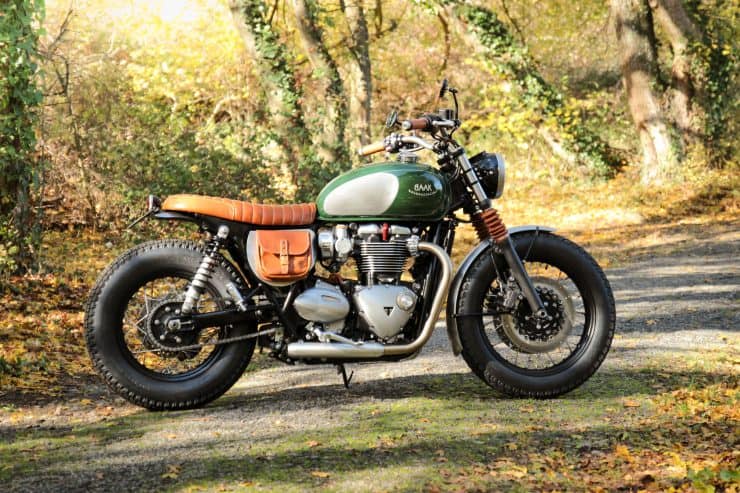THE TRIUMPH BONNEVILLE T120 More fun that watching a dozen frogs in a Fly factory. The Triumph Bonneville T120 made its debut in 2016, the motorcycling world had been expecting some big announcements from Triumph so it wasn’t a complete surprise, but the T120 was perhaps a little more than most were anticipating. At its heart […]
Monthly Archives: November 2017
This is the Old Russ Collins Bike I created from parts. Below is a Video but hard to hear as the old Powder coating shop behind us is loud as hell, but it was a tight motor and loved to ride it, hard to hear but this is the only video I have of it. […]
Hey there all, Hump Day already, so- As to make the day a little more enjoyable, what better than to have a little video of how to get used to riding a Combination, or what you lot call a side car, we also call it an outfit too, but, none the less, here is some […]
Well, just as you think there cant be anything else out there that will make my eyes open wide, my mouth hit the floor and just stand there trembling, but there most definatly is a really cool Museum that I hope to visit sometime, I used to live in Australia and loved the whole place, […]
Born of tradition. Raised by originality. A potent combination of experience & elbow grease. Fitzke Paddleboards seamlessly melds them all with stunning results. Here is the Fitzke Paddle Board, a luxurious wooden paddle board inspired by the 1920s wooden planes and boats. If the classic paddle boards look like a big foam board, the American designer Kevin […]
I left the shores of Blighty back in 1997, but before that I used to regularly attend 2 brilliant Motorcycle shows back home annually, that was Earls Court in London and the NEC in Birmingham. The NEC is still banging out the shows and I feel the UK shows have more atmosphere and more Hands on […]
Often I tell people that it is so refreshing to see many Girls- Women that are taking a very Healthy interest into the Two Wheeled fraternity, I have always had an admiration for female riders, as for me personally, I would think it would be quite boring sat on the back of a Motorcycle, whilst […]
Well, this time of year has certainly flown by, and I wanted to take this opportunity to thank you all for the many orders , emails and phone calls that you have kindly taken upon over this year, I have always appreciated this and if it was not for you, then I would not be […]
Well, its Hump day, and seeing as the next day is Thanksgiving, some of you may have some time on your hands whilst everyone else is asleep from eating too much Turkey. So what I have done here is a compilation of music I have liked on the internet, and hopefully there may be one […]
Back in the 80’s, the Japanese Motorcycles were dominating races on the track and reliability on the road, the CB1100 was the sequential Mother Load of Torque, just sheer grunt and what I would call Linear power band, it just was like a Steam train and would go and go. Below, Dennis Neils takes hos […]










